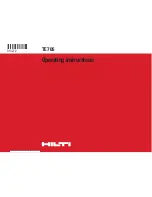AN10907
All information provided in this document is subject to legal disclaimers.
© NXP B.V. 2010. All rights reserved.
Application note
Rev. 1 — 28 December 2010
30 of 82
NXP Semiconductors
AN10907
TEA1613T resonant power supply control IC
8.3 HBC adaptive non-overlap
8.3.1 Inductive mode (normal operation)
The high efficiency of a resonant converter is the result of Zero-Voltage Switching (ZVS)
of the power MOSFETs, also called soft-switching. To allow soft-switching, a small
non-overlap time (also called dead time) is required between the on-time of the high-side
MOSFET and low-side MOSFET. During this non-overlap time, the primary resonant
current (dis)charges the capacitance of the half-bridge between ground and boost
voltage. After the (dis)charge, the body diode of the MOSFET starts conducting and
because the voltage across the MOSFET is zero, there are no switching losses.
This mode of operation is called inductive mode because the switching frequency is
above the resonance frequency and the resonant tank has an inductive impedance.
The time required for the transition of the HB depends on the amplitude of the resonant
current at the moment of switching. There is a (complex) relationship between the
amplitude, the frequency, the boost voltage and the output voltage. Ideally the IC should
switch on the MOSFET as soon as the transition of the HB has reached its end value. To
prevent a swing back of the HB voltage, it should not wait longer, especially at high output
load.
The adaptive non-overlap function of the TEA1613T provides an automatic measurement
and control function that decides when to switch on. As it uses actual measurement
inputs, the control adapts for operation changes in time.
Because of this adaptive non-overlap function, it is not necessary to preset a fixed
non-overlap time, which always is a compromise between different operating conditions.
The adaptive non-overlap function senses the slope at HB after one MOSFET has been
switched-off. Normally the slope at the HB starts directly. Once the transition of the HB
node is complete, the slope ends. This is detected by the adaptive non-overlap sensing
Fig 16. Inductive mode HBC switching
GateLs
GateHs
Hb
I
TrHbc
C
fmin
t
V
boost
0
001aal440


















